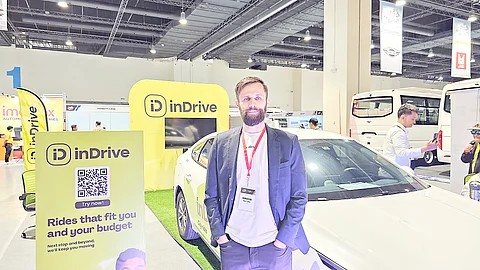
- NEWS
- the EDIT
- COMMENTARY
- BUSINESS
- LIFE
- SHOW
- ACTION
- GLOBAL GOALS
- SNAPS
- DYARYO TIRADA
- MORE

As ride-hailing becomes increasingly vital in the daily lives of Filipino commuters, global mobility platform inDrive is championing a smarter, more sustainable path for growth: partnering with local fleet operators to optimize underutilized vehicles and empower more drivers to serve the public. Speaking at the Philippine Commercial Vehicle Show, inDrive regional director Mark Tolley emphasized that fleet collaborations can help close the gap between strong passenger demand to enhance daily commute experience while opening more livelihood opportunities to drivers.”
“In our APAC and Latin American markets, we’ve observed lasting demand for trustworthy mobility services,” Tolley shared. “At the same time, many drivers want to serve their communities, but they lack access to cars. That’s why we encourage local fleets to team up with ride-hailing platforms. These partnerships don’t just expand access to reliable transport, they also give drivers a sustainable source of livelihood.”
Currently, the Land Transportation Franchising and Regulatory Board has provided over 70,000 accredited vehicle slots to 19 ride-hailing companies. Rather than putting new cars on the road, inDrive’s approach is to work with fleet operators who can repurpose underutilized vehicles, maximizing existing assets and reducing the reliance on private car ownership or informal operators.
inDrive is currently working with fleet partners in Mexico, Nepal and Peru, where it has adjusted its schemes to fit the mobility needs of each market. In the Philippines, fleet partners are encouraged to work with ride-hailing companies to create schemes that benefit local drivers and commuters. More than just leveraging the Philippine car market’s growth, fleet partnerships will pave the way for inclusive and sustainable expansion.
What makes an ideal fleet partner?
Tolley said that fleets are invited to view their ride-hailing partnerships as an opportunity to serve more passengers and provide jobs to Filipino drivers in building sustainable livelihoods. Thus, it’s important for fleets to keep their rental rates affordable for drivers. This way, drivers can cover their rental payments without the need to double the number of rides.
Fleets are also advised to explore various ways to source their funds. Tolley pointed out that while some fleets have the capital to self-finance, others work with banks, which can increase interest rates. Thus, it’s ideal for fleets to consider schemes that prevent TNVS drivers from shouldering these rates.
Why ride-hailing partnerships benefit local fleets
During his presentation, Tolley said that fleet partnerships with ride-hailing apps can benefit both parties. In the case of inDrive’s fleet partnerships in its other APAC markets, the platform has offered local fleets access to its industry-leading IT platform and existing financial partners to help in business expansion. Fleet partners can also increase their revenue as they can keep a higher percentage of the gross merchandise value due to inDrive’s 10 percent commission rate. They can also earn bonuses for meeting KPIs and using company branding on their vehicles.
As for how local fleets have helped ride-hailing apps, Tolley said that inDrive’s fleet partners have helped the platform attract more drivers, support them in their daily work, and help them improve their road performance. Fleet partners have also helped inDrive promote its services by designing vehicles with inDrive’s signature green logo.
Exploring new ways to empower drivers
Alongside fleet partnerships, inDrive continues to explore innovative, driver-centric models that put more control and opportunities into the hands of Filipino drivers and passengers. In various markets, inDrive has piloted a peer-to-peer model that enables a more human and less digital approach between passengers and drivers, aiming to strike a better balance between affordability and fairness, and avoiding unreasonable surge pricing.
While subject to local regulatory approval, early results from international implementations of the peer-to-peer model are promising including a more than 30 percent increase in driver earnings, 24 percent decrease in driver cancellations and 34 percent decrease in passenger cancellations.
inDrive believes that smarter pricing models, grounded in transparency and mutual agreement, can play a role in supporting both driver livelihoods and commuter satisfaction, especially when deployed alongside a responsible fleet strategy.
“The reason we do this is simple: we want more drivers on the road to address the increasing passenger demand, but we want that growth to be sustainable,” Tolley explained. “We’ve been fortunate to find mission-aligned partners in other countries, and we’d love to build those same relationships here in the Philippines.”
inDrive invites local fleets to collaborate, empower more Filipino drivers, and serve more passengers in the name of reliable transport together. For more updates on inDrive’s fleet initiatives, visit www.inDrive.com.
